Salem is a historic town in Massachusetts. The area was home to native people for thousands of years before being settled by the Massachusetts Bay colonists in the 17th century.
Salem is most famous for the being the site of the Salem Witch Trials in 1692 but also has a rich maritime history as well.
The following is the history of Salem:
4,000 Years Ago:
- The Naumkeag tribe settle the area between Medford, Mass and Portsmouth, New Hampshire.
1616-1619:
- An epidemic breaks out in the Native-American villages in New England and hits the Naumkeag tribe hard, greatly reducing their numbers.
1626:
- Roger Conant and a group of settlers from the failed colony at Gloucester arrive in the area the natives call Naumkeag, which is modern-day Salem, and settle it. Conant serves as the settlement’s governor.
1628:
- On June 20, John Endecott and a group of settlers from the New England Company for a Plantation in Massachusetts Bay arrive in Naumkeag with a patent to settle the area. Conant peacefully surrenders control of Naumkeag.
1629:
- The Massachusetts Bay Colony charter is confirmed and the New England Company is renamed the Massachusetts Bay Company.
- Naumkeag is renamed Salem, a hellenized version of the Hebrew word “Shalom” (which means peace) in honor of the peaceful agreement between Endicott and Conant.
1630:
- On June 12, John Winthrop and the Massachusetts Bay Company reach the New World and land in Salem but the village can’t accommodate all of the new settlers so they continue on to Charlestown and eventually settle in Boston.
1637:
- The Old Burying Point Cemetery, also known as the Charter Street Cemetery, is established.
1640:
- On November 14, Judge Jonathan Corwin is born in Salem.
1641:
- On August 5, Judge John Hawthorne is born in Salem.
1643:
- Fort William is established on Winter Island.
1649:
- The Salem Custom House is established.
1655:
- Broad Street Cemetery is established on what is now modern day Broad Street.
1660:
- The Pickering House is built sometime around 1660 on Broad Street.
1664:
- The Pickman House is built on Charter Street.
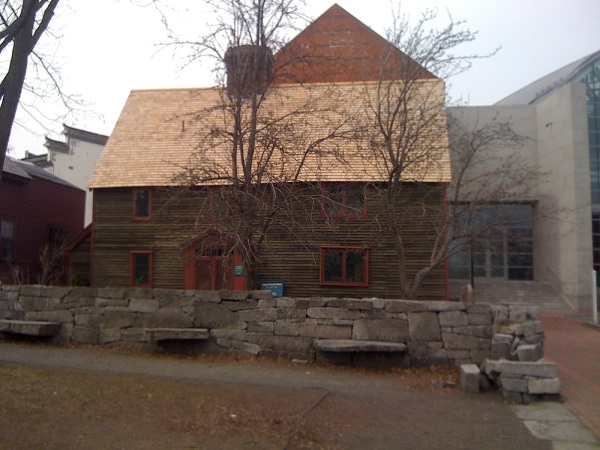
1665:
- The Gedney House is built for Eleazor Gedney on High Street.
1668:
- The Ingersoll-Turner mansion, now known as the House of Seven Gables, is built by merchant John Turner.
1672:
- On October 8, 1672, Salem Village officially separates from Salem Town.
1675:
- Jonathan Corwin purchases a partially constructed house, now known as the Witch House, on Main Street (Essex Street) and completes construction on it.

1677:
- The Salem Courthouse is built on modern-day Washington Street.
1679:
- On October 18, Ann Putnam, Jr, is born in Salem.
1684:
- The John Ward House is built by colonist John Ward on Essex Street.
- The Essex County Jail, later known as the Salem Witch Jail, is built on what is now St. Peter Street.
1686:
- On October 11, a group of selectman, John Ruck, John Higginson, Samuel Gardner, Timothy Landall, William Hirst, and Israel Porter, purchase Salem, Danvers and Peabody from the Naumkeag tribe for 20 pounds. Although the tribe had moved to Lowell after King Philip’s War ended, it still returned to Salem on a yearly basis until 1725 and camped on the side of Gallows Hill.
1688:
- The William Murray House is built on Main Street (Essex Street).
1692:
- On March 1, the Salem Witch Trials begin when three women, Tituba, Sarah Good and Sarah Osbourne, are arrested on charges of witchcraft. Tituba confesses and declares that there are more witches in Salem which sparks a massive witch hunt.
- On June 1, Bridget Bishop becomes the first person executed during the Salem Witch Trials when she is hanged at Proctor’s Ledge.
- On July 19, Rebecca Nurse, Susannah Martin, Elizabeth Howe, Sarah Good and Sarah Wildes are hanged at Proctor’s Ledge.
- On August 19, 1692, John Proctor, George Burroughs, George Jacobs Sr, John Willard and Martha Carrier are hanged at Proctor’s Ledge.
- On September 19, 1692, Giles Corey is pressed to death in a field on Howard Street after refusing to to continue with his trial.
- On September 22, 1692, Martha Corey, Margaret Scott, Alice Parker, Ann Pudeator, Samuel Wardwell, Mary Easty, Wilmot Redd and Mary Parker are hanged at Proctor’s Ledge. These are the last executions of the Salem Witch Trials.
1696:
- On April 12, Sheriff George Corwin dies of a heart attack at the age of 30.
1697:
- Judge Bartholomew Gedney dies and is buried in the Charter Street Cemetery.
1717:
- On May 10, 1717, Judge John Hathorne dies at the age of 76 and is buried in the Charter Street Cemetery.

1718:
- On June 9, Judge Jonathan Corwin dies in Salem at the age of 78 and is buried in the Corwin family tomb in the Broad Street Cemetery.
1727:
- Ropes Mansion is built for local merchant Samuel Barnard on Essex Street.
1733:
- Philip English donates a section of land on the corner of Brown and St. Peter Street, and a small wooden church, called the St. Peter’s Episcopal Church, is built there.
1745:
- On July 17, Thomas Pickering, Senator and the third U.S. Secretary of State, is born in Salem.
1752:
- Salem Village is renamed Danvers. Salem town keeps the name Salem.
1760:
- The Salem Courthouse on Washington Street, where the Salem Witch Trials were held, is torn down.
- Sometime between 1759 – 1760, the Nathaniel Bowditch House is built on North Street.
1762:
- Derby Wharf is built at Salem Harbor.
1764:
- On August 24, 3,000 angry colonists storm Salem after members of the committee of correspondence are arrested for holding a town meeting.
1773:
- On March 26, Nathaniel Bowditch is born in Salem.
1774:
- On October 6, a fire destroys Judge John Hathorne’s mansion on Washington Street as well as a nearby meetinghouse, seven other homes and 14 stores.
- General Thomas Gage moves the Massachusetts General Court from Boston to Salem.
1775:
- On February 26, a skirmish known as Leslie’s Retreat takes place in Salem.
1776:
- Fort Lee is established near Fort Avenue at Salem Neck.
1782:
- The Peirce-Nichols House is built for merchant Jerathmiel Pierce on Federal Street.
1784:
- Merchant Joshua Ward purchases George Corwin’s property on Washington street, razes Corwin’s house and builds a large Federal-style brick mansion, the Joshua Ward House, which still stands today.
1785:
- The Old Courthouse is built on Federal Street.
1787:
- The Rufus Choate House is built on Lynde Street.
1791:
- The Baker Island Light is constructed on Baker Island.
1797:
- The East Indiaman Friendship is launched in Salem Harbor.
1799:
- The East India Marine Society is founded.
- Fort William is renamed Fort Pickering in honor of Colonel Timothy Pickering of Salem.
1801:
- The city transforms the swamp at Washington Square into a tree-lined park called Salem Common.
- The Howard Street Cemetery is established on what is now modern day Howard Street.
1804:
- On July 4, Nathaniel Hawthorne is born in Salem.
- The Gardner-Pingree House is built for John and Sarah Gardner on Essex Street.
1805-1807:
- Hamilton Hall is built on Chestnut Street.
1806:
- The Ye Olde Pepper Companie is founded in Salem.
1807:
- The Greenlawn Cemetery is established on Orne Street.
1808:
- The First Universalist Church is built on Bridge Street.
1809:
- The Thomas March Woodbridge House is built for tannery owner Thomas March Woodbridge on Bridge Street.
- On September 21, Sophia Peabody is born in Salem.
1810:
- The Salem Athenaeum is founded.
1811:
- The Joseph Fenno House is built on Hawthorne Boulevard.
- Bessie Monroe House is built on Ash Street.
- The Joseph Story House is built for U.S. Supreme Court Justice Joseph Story on Winter Street.
1812:
- In September, the Friendship is captured by the British warship the HMS Rosamond during the War of 1812.
1813:
- The old witch jail on Federal Street, where the accused witches were held in 1692, is abandoned and a new jail is built on St. Peter Street.
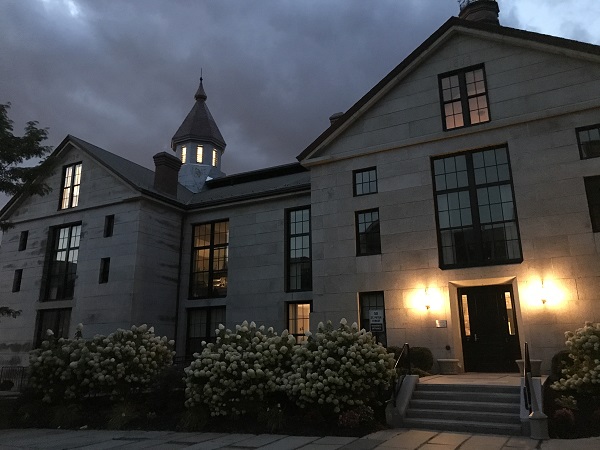
- The Battle of the Chesapeake and the Shannon takes place in Salem Harbor during the War of 1812.
1816:
- Old Town Hall is built in Derby Square.
1819:
- The Salem Custom House is built.
1825:
- The East India Marine Hall is built on Essex Street.
1829:
- On January 29, Thomas Pickering dies at the age of 84 in Salem.
1830:
- Bowker Place is built on Essex Street.
- On April 6, Captain Joseph White is murdered in his house, the Gardner-Pingree House, on Essex Street.
- On May 5, 1830, a jury indicts Richard Crowninshield for the murder of Captain Joseph White. Three other men, Richard’s brother George, Frank Knapp and Joseph Knapp, are charged with abetting the crime.
- On June 15, Richard Crowninshield hangs himself in his jail cell at the Salem jail.
- In August, Frank Knapp’s trial ends in a mistrial and he is retried two days later and found guilty of hiring Richard Crowninshield to murder White.
- On September 28, Frank Knapp is hanged in front of the Salem jail.
- In November, Joseph Knapp is tried and found guilty of murder and George Crowninshield is tried and acquitted in the murder of White.
- On December 31, Joseph Knapp is hanged in front of the Salem jail.
1831:
- The Salem Lyceum is built on Church Street.
1833:
- St. Peter’s Episcopal Church is torn down and a stone church is built in its place which still stands today. The stone church is much larger than the wooden church so it is built on top of some of the graves, including Philip English’s grave.
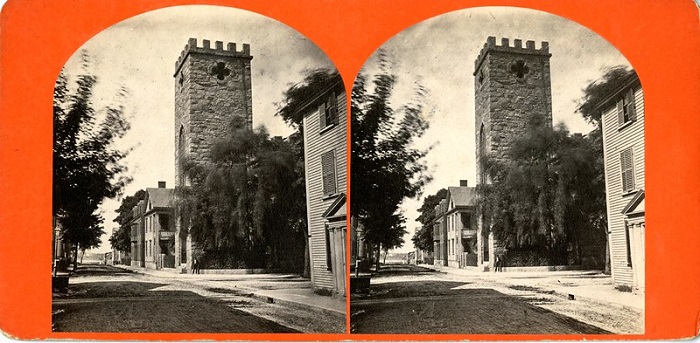
1834:
- The West Cogswell House is built merchant Nathaniel West on Summer Street.
1836:
- Salem is incorporated as a city.
1838:
- The Eastern Railroad line is opened.
- City Hall is built on Washington Street.
1841:
- The Old Granite Courthouse is build on Federal Street.
1844:
- Construction begins on the East Church on Washington Square.
1846:
- Construction is completed on the East Church on Washington Square.
1854:
- Salem State College is founded.
1859:
- The police station is built at 15 Front Street.
1862:
- The Salem Superior Court is built on Federal Street.
1863:
- Abner Cheney Goodell purchases the old Salem jail, which still has the dungeon in the basement, and remodels it into a home.
1868:
- The John P. Peabody House is built for merchant John P. Peabody on Summer Street.
1871:
- The Derby Wharf Lighthouse is built on Derby Wharf.
1877:
- Alexander Graham Bell holds the first public demonstration of the telephone at the Lyceum building.
1880:
- On June 10, an amusement park opens at Salem Willows.
1881:
- The North Street Fire Station is built on North Street.
1889:
- The Wesley Methodist Church is built on North Street.
1898:
- The Salem YMCA is built on Essex Street.
1901:
- On December 12, Parker Brothers is founded in Salem.
1906:
- The Salem Laundry, a concrete laundry building, is built on Lafayette Street.
- In April, magician Harry Houdini performs three sold out shows at the Salem Theater while on tour. During his stay, the chief of police challenges Houdini to escape a locked cell at the police station, at 15 Front Street, while handcuffed and shackled, which he does successfully in the span of 13 minutes.
1908:
- The St. Nicholas Orthodox Church and Rectory is built on Forrester Street.
- Caroline Osgood Emmerton purchases the House of Seven Gables and restores it to its original 17th century appearance.
1909:
- The Essex County Registry of Deeds and Probate Court is built on Federal Street.
1910:
- The House of Seven Gables opens as a historic house museum.
1913:
- On June 17, a bronze statue of Roger Conant, which was designed by artist Henry H. Kitson and erected by the Conant Family Association, is dedicated on Brown Street.
- A new police station is built at 17 Central Street which also houses the First District Court of Essex County and the city’s marshall’s office.
1914:
- On June 25, the Great Salem Fire of 1914 takes place.
1925:
- The Hawthorne Hotel is built at Washington Square.
1930:
- Pioneer Village is built in Forest River Park to celebrate the Massachusetts Bay Colony’s 300th anniversary.
1931:
- The Salem Post Office is built on Margin Street.
1935:
- Historian Alfred Putnam Goodell, son of Abner Cheney Goodell, begins running the Old Witch Jail tourist attraction at his home on Federal Street and allows visitors to tour the dungeon where the accused witches were kept.

1941:
- The Salem Diner, a Sterling Streamline diner, is built on Loring Ave.
1945:
- Historic Salem, Inc. moves the Jonathan Corwin house about 35 feet to its current location, to avoid demolition when North Street is widened, and begins restoring it to its original seventeenth century appearance.
1947:
- On Memorial Day weekend, the Jonathan Corwin house opens to the public as a historic house museum, called the Witch House, on Essex Street.
1952:
- In the spring, playwright Arthur Miller spends a week in Salem researching the Salem Witch Trials court records for his play The Crucible.
- On July 16, the Coast Guard spots and photographs unidentified flying objects over Winter Island.
1956:
- The New England Telephone Company demolishes the Goodell home on Federal Street to construct its new headquarters and discovers the old dungeon underneath. The company donates two wooden beams from the old dungeon to the Peabody Essex Museum.
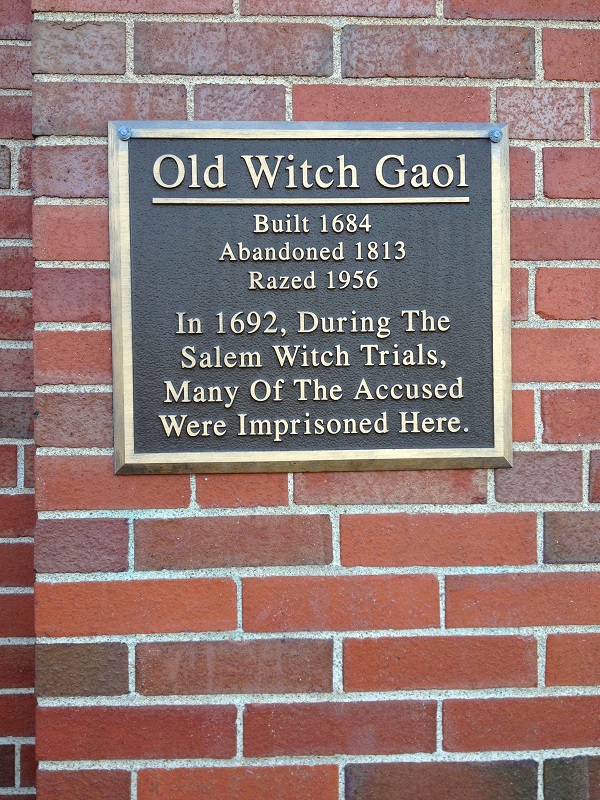
1970:
- In June and July, several episodes of the popular television show, Bewitched, are filmed in several locations in Salem, such as the Witch House, the House of Seven Gables and the Hawthorne Hotel. The episodes sparks public interest in the trials and Salem soon becomes a popular tourist destination.
- The City of Salem declares October 7 “Bewitched Day” in Salem.
1972:
- The Salem Witch Museum opens in the former East Church at Washington Square.
1977:
- The Museum Place Mall is built on Church Street.
1982:
- The first annual Haunted Happenings is held in Salem.
1992:
- The Salem Witch Trials Memorial is built on Liberty Street.
- In October, scenes from the Disney movie Hocus Pocus are filmed in several locations in Salem, such as at the Ropes Mansion, Pioneer Village, Phipps Elementary School and the Old Town Hall.
2005:
- On June 15, the newly built Bewitched Statue on the corner of Essex and Washington Street is dedicated.
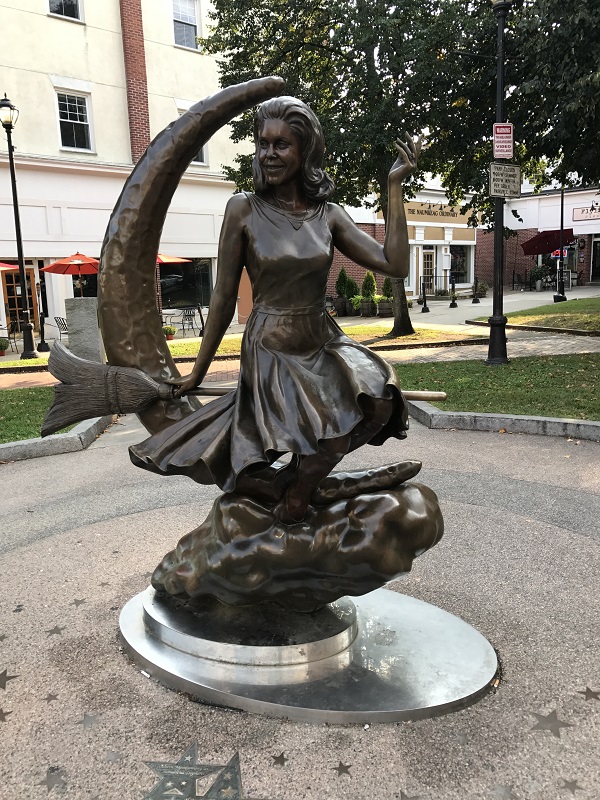
2015:
- The Joshua Ward House is re-purposed as a hotel called The Merchant.
2016:
- The Gallows Hill Project confirms that Proctor’s Ledge is the site of the Salem Witch Trials executions.
2017:
- The Proctor’s Ledge Memorial is built on Pope Street.
2019:
- In the summer, the Netflix movie Hubie Halloween is filmed in Salem.
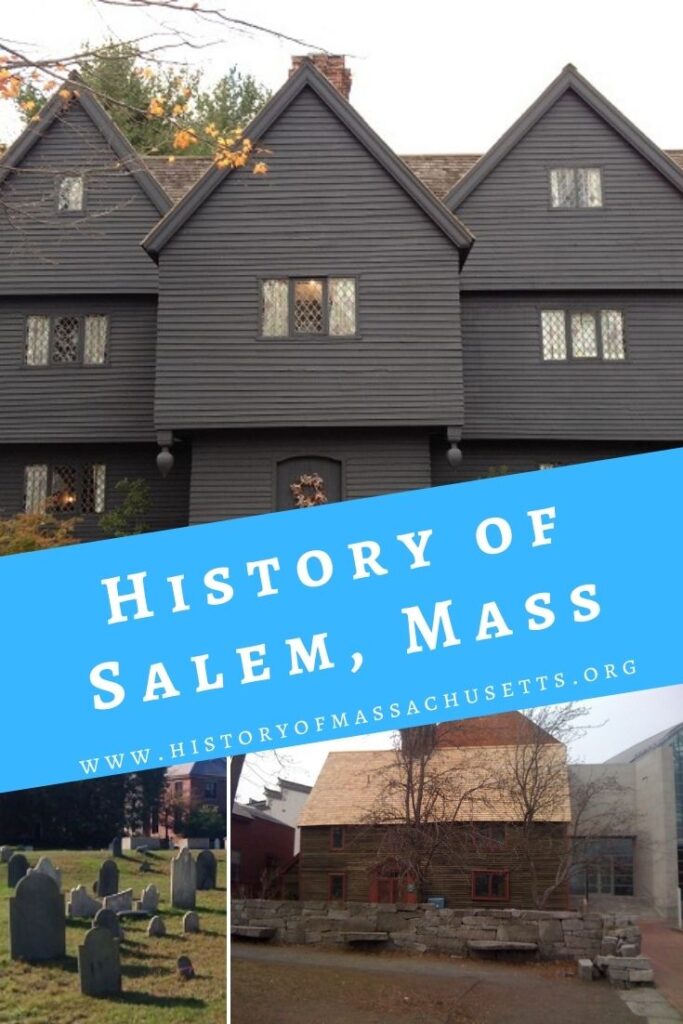
For more info on Salem’s history, check out this article on Salem Historic Sites and this article on the Salem Heritage Trail.
Sources:
Perley, Sidney. The Indian Land Titles of Essex County, Massachusetts. Essex Book and Print Club, 1912.
Curley, Jerome. “Naumkeag Thankgivings — A History of the Holiday in Salem.” 21 Nov. 2011, patch.com/massachusetts/salem/naumkeag-thanksgivings
“House Histories of Salem.” Historic Salem Inc, hsihousehistory.omeka.net
“Notable Locals.” Salem.com, salem.org/notable-locals
“Leslie’s Retreat Monument.” Salem.com, salem.com/veterans-services/pages/leslies-retreat-monument
McCabe, Kathy. “Bewitched Statue Plan Bothers, Bewilders.” Boston Globe, 28 April, 2005, archive.boston.com/news/local/massachusetts/articles/2005/04/28/bewitched_statue_plan_bothers_bewilders/
“Fort Pickering.” Salem.com, salem.com/veterans-services/pages/fort-pickering
